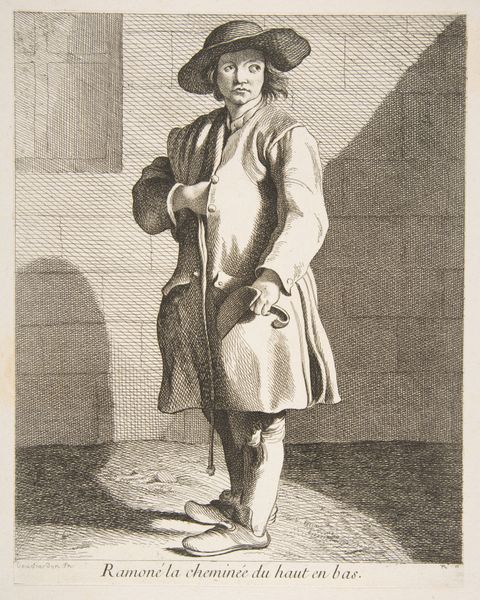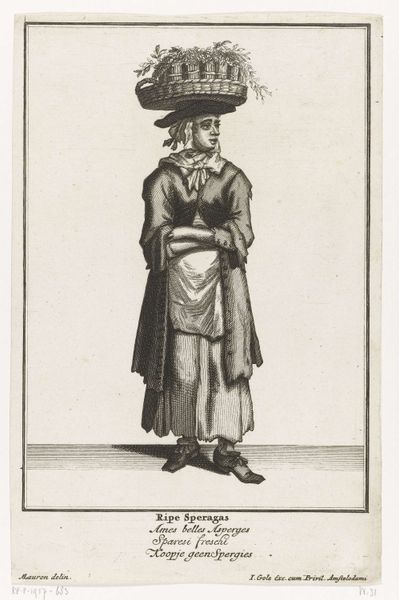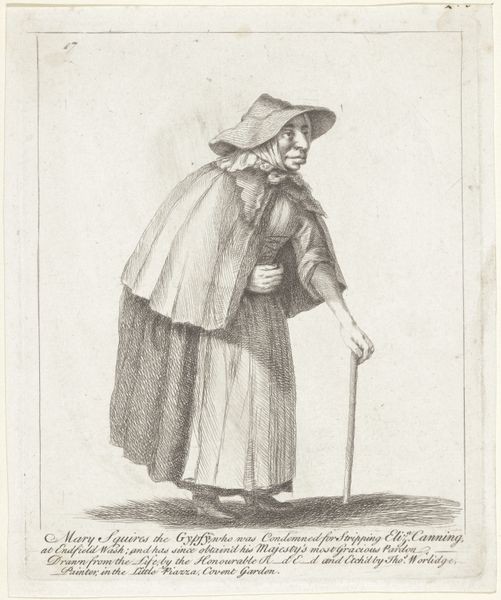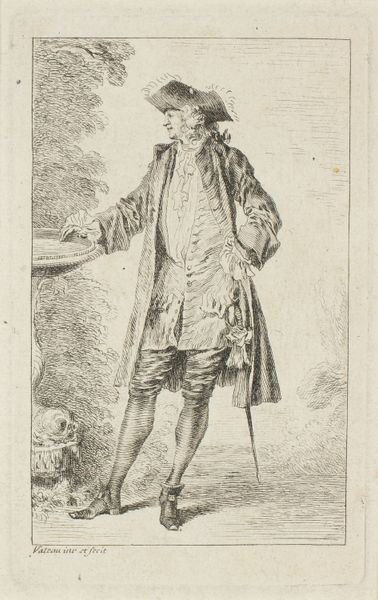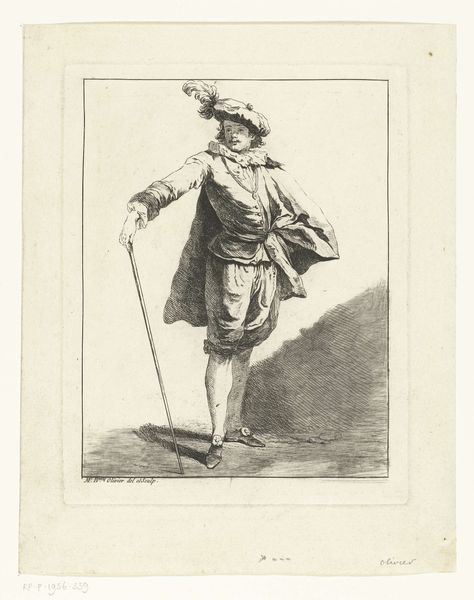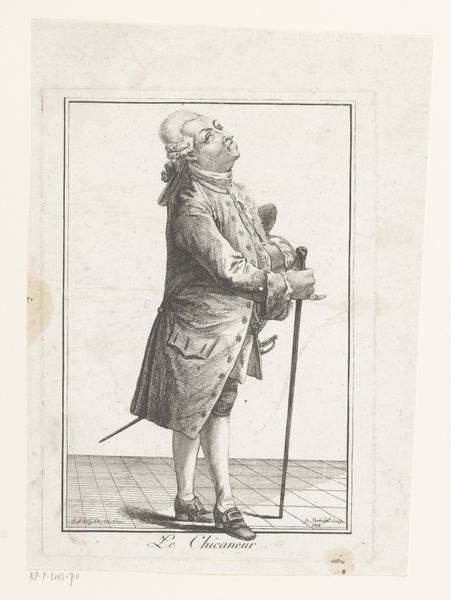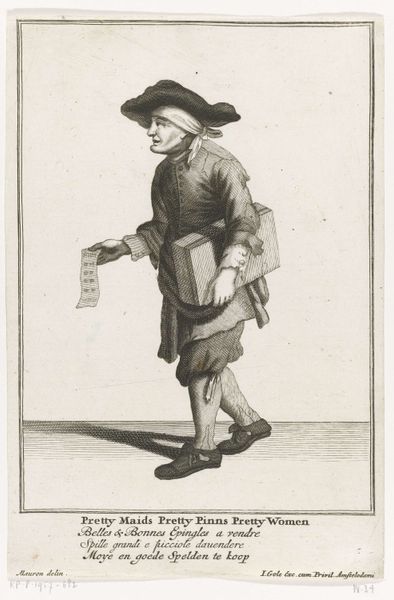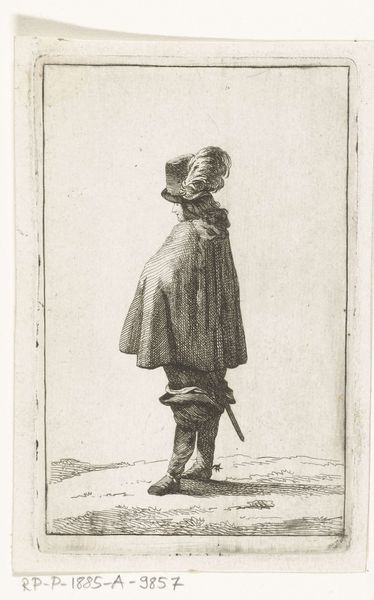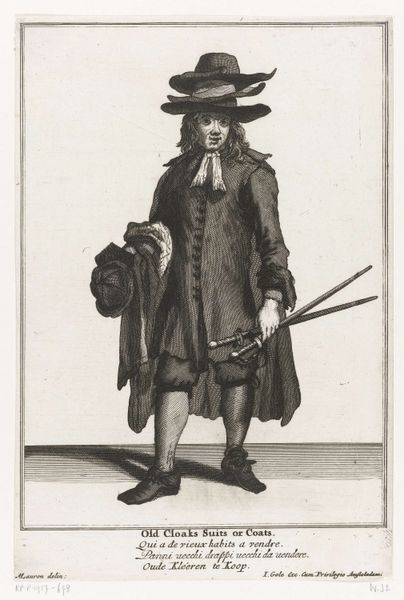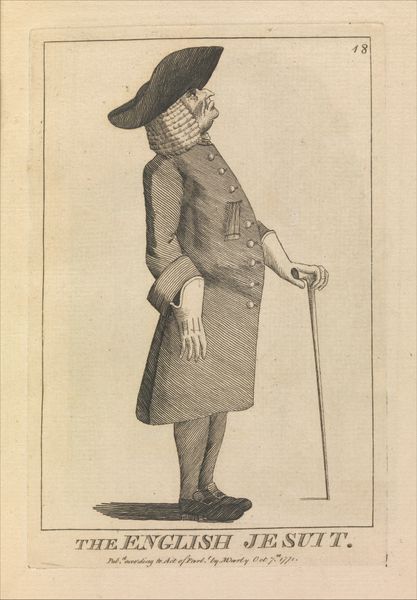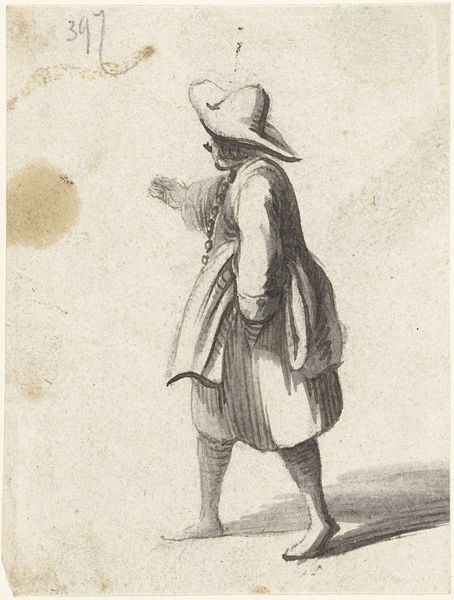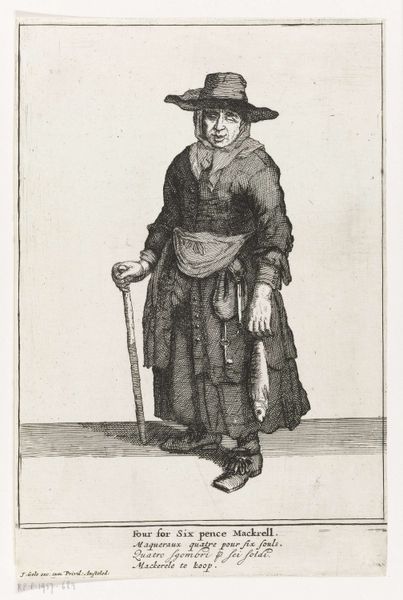
drawing, print
#
portrait
#
drawing
#
baroque
# print
#
figuration
#
men
#
line
#
portrait drawing
#
genre-painting
#
academic-art
Dimensions: Sheet: 9 1/4 x 7 1/8 in. (23.5 x 18.1 cm) Image: 8 7/8 x 7 1/16 in. (22.5 x 18 cm)
Copyright: Public Domain
Curator: This is "Old Bricklayer," an etching by Anne Claude Philippe Caylus, created in 1737. Editor: It strikes me as a surprisingly solemn depiction. The starkness of the lines and the monochromatic palette lend a certain weight to what might otherwise be a simple genre scene. Curator: Caylus was deeply engaged with representing the everyday. His depictions often elevate the common worker to a subject worthy of artistic consideration. This piece showcases that interest in portraying labor. But look at the precision in the linework; it elevates the subject beyond a mere study of social class. Editor: The placement of the figure is intriguing too. He's not quite central, but still commands the composition through that simple posture and gaze. The large expanse of the brick wall behind him, rendered with an almost architectural precision, emphasizes the solitary nature of his work. This was made when Europe was full of unrest. How does this artwork act as political commentary in its era? Curator: The political dimensions are definitely worth considering. There's an argument to be made about romanticizing labor. But that wall behind him, those bricks, they represent societal foundations. Showing him gives honor to these occupations and perhaps emphasizes the importance of the working class during times of great change. Caylus presents this bricklayer as dignified. Editor: It’s also worth discussing how prints like these functioned in society at the time. As affordable art objects, prints played a crucial role in disseminating imagery. How does this artwork act as visual information about architecture and professions of this era? What stories are embedded into this man's portrait through the social hierarchy in the arts? Curator: This image has certainly given me a renewed appreciation for the nuanced portrayal of labor and class in 18th-century art. It’s fascinating to unravel these social dynamics through art. Editor: I agree, by viewing beyond its lines, we found great depths, and now have an evolved outlook.
Comments
No comments
Be the first to comment and join the conversation on the ultimate creative platform.
